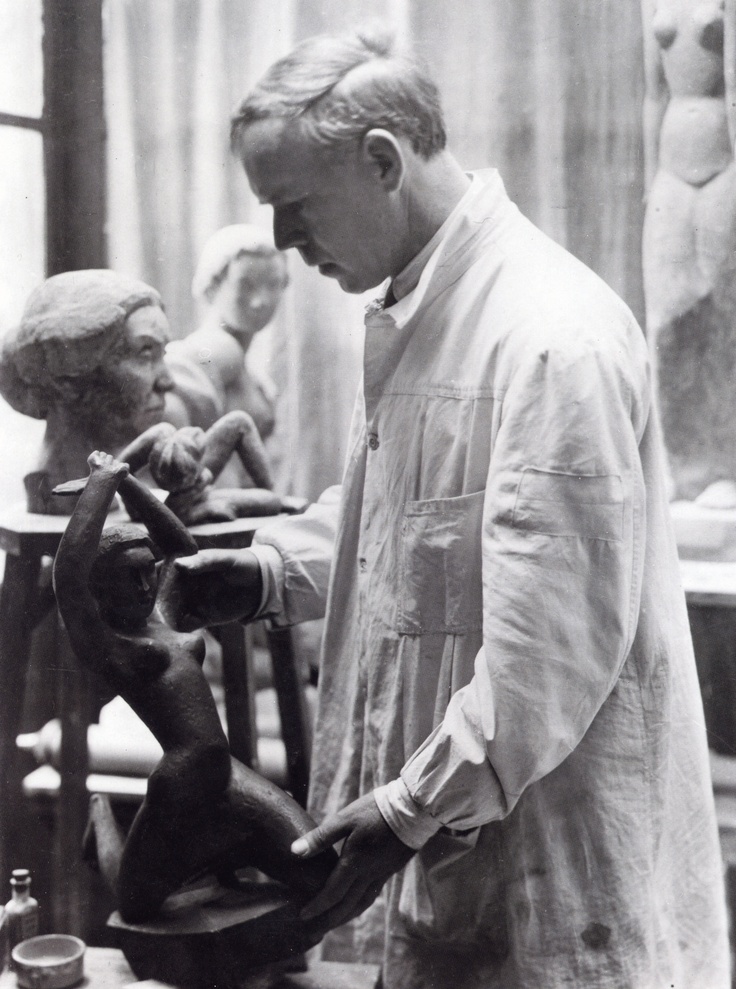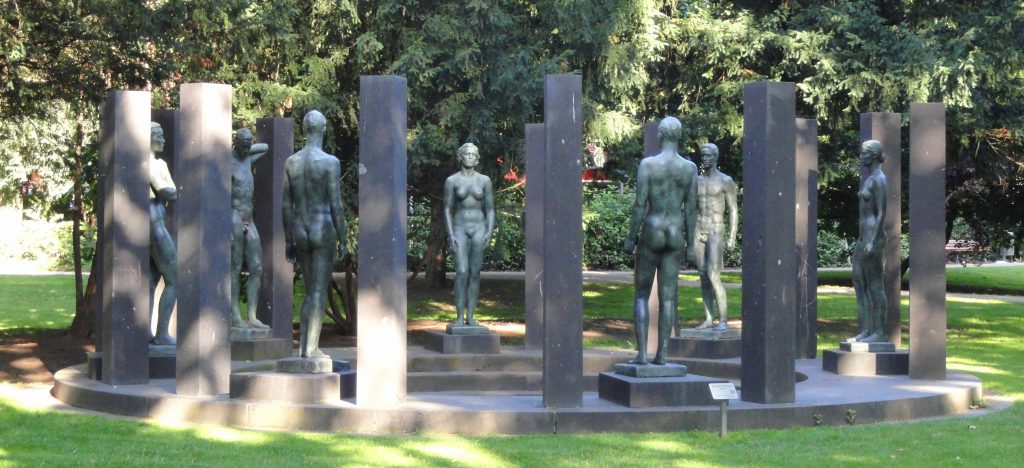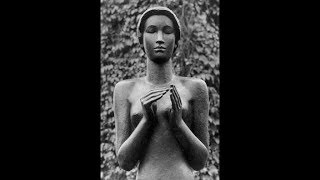
From Faces of Ancient Europe
Georg Kolbe (15 April 1877 – 20 November 1947) one of the most successful sculptors of his time in a vigorous, modern, simplified classical style similar to Aristide Maillol of France.
Career
In 1905, Kolbe joined the ‘Berliner Sezession’, which in 1913, he left to join the ‘Freie Sezession’ His artistic breakthrough came in 1912 with his sculpture masterpiece “Die Tänzerin”, his most famous work. As he was very interested in Asian faces, D. N. Mazumdar, father of Indian novelist Anita Desai, sat for him, resulting in a bust and a torso. In 1929, he also collaborated with Lilly Reich and Mies van der Rohe for his sculpture in the Barcelona Pavilion; Mies placed Kolbe’s Morgen (Morning) in a small water basin. As the last president of the Deutscher Künstlerbund, he devoted himself to the promotion of fellow artists who were classified “degenerate”.
Kolbe also made ninety-nine prints, beginning with lithographs around 1900, primarily literary illustrations. In 1919-1920, Kolbe practically did not work as a sculptor. During this time small-size sculptures and drawings became central in his works. In the 1920s, encouraged by Cassirer, he made drypoints of dancers and nudes in motion, subjects he favored in his sculpture.
 Kolbe executed important commissions throughout his long career, including many for the National Socialists during the last 15 years of his life. The National Socialist appropriated his late style of monumental, idealized athletic nudes. From 1937 to 1944, Kolbe participated regularly at Große Deutsche Kunstausstellung, organized by the Haus der Kunst, Munich. His uncharacteristically bombastic Verkündigung (Proclamation) (1924) was a focal point of the 1937 German Pavilion. Commissioned by the German-Spanish economic organization Hisma in 1939, Kolbe created a portrait bust of the Spanish dictator Francisco Franco, which was given to Hitler as a birthday present the same year. In 1944, in the final stages of World War II, Hitler and Joseph Goebbels included Kolbe in the Gottbegnadeten list of the twelve most important visual artists. Only after Kolbe’s death, a Beethoven monument (1926−47) and the Ring der Statuen were installed in Frankfurt am Main. The realization of a Friedrich Nietzsche memorial in Weimar failed because of Hitler’s appeal.
Kolbe executed important commissions throughout his long career, including many for the National Socialists during the last 15 years of his life. The National Socialist appropriated his late style of monumental, idealized athletic nudes. From 1937 to 1944, Kolbe participated regularly at Große Deutsche Kunstausstellung, organized by the Haus der Kunst, Munich. His uncharacteristically bombastic Verkündigung (Proclamation) (1924) was a focal point of the 1937 German Pavilion. Commissioned by the German-Spanish economic organization Hisma in 1939, Kolbe created a portrait bust of the Spanish dictator Francisco Franco, which was given to Hitler as a birthday present the same year. In 1944, in the final stages of World War II, Hitler and Joseph Goebbels included Kolbe in the Gottbegnadeten list of the twelve most important visual artists. Only after Kolbe’s death, a Beethoven monument (1926−47) and the Ring der Statuen were installed in Frankfurt am Main. The realization of a Friedrich Nietzsche memorial in Weimar failed because of Hitler’s appeal.

Kolbe died of bladder cancer in St. Hedwig-Krankenhaus in Berlin on 20 November 1947.
Source Article from http://www.renegadetribune.com/georg-kolbe-leading-german-figure-sculptor-generation/
Related posts:
Views: 0
 RSS Feed
RSS Feed















 August 28th, 2017
August 28th, 2017  Awake Goy
Awake Goy 
 Posted in
Posted in  Tags:
Tags: 
















